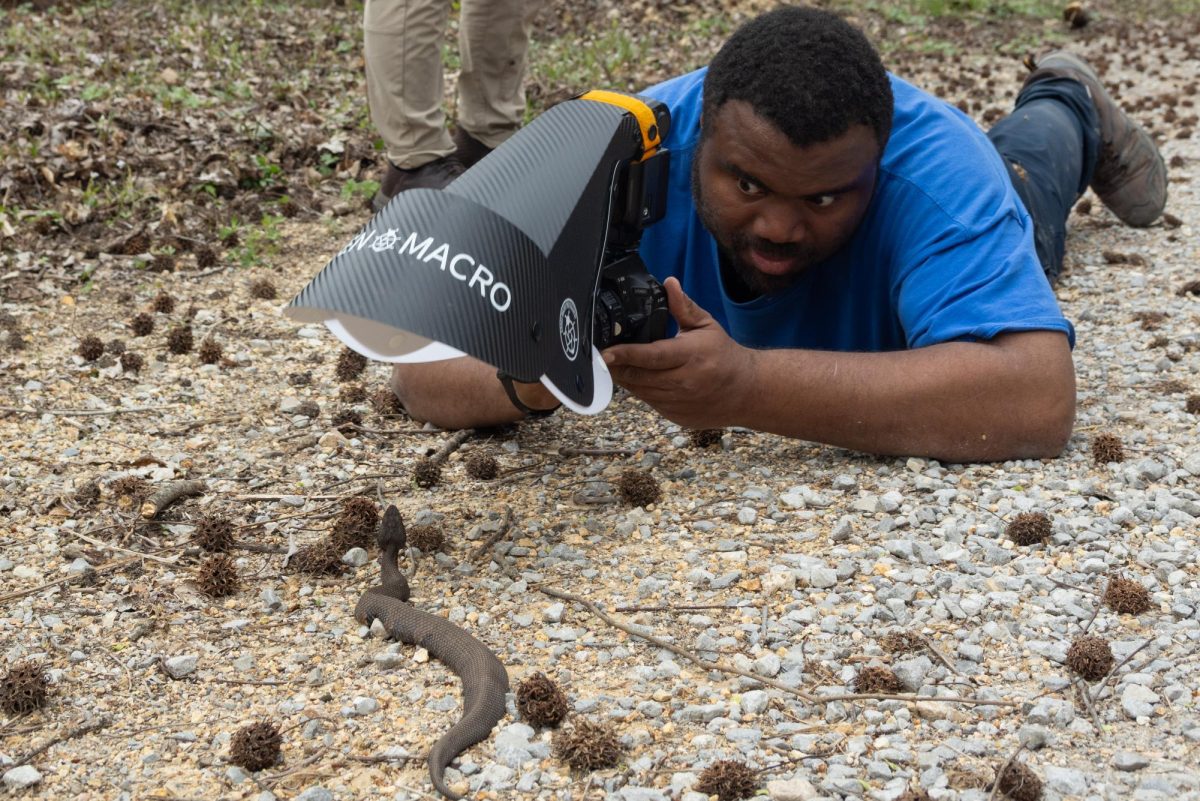Thompson Woods survey stirs further debate among campus community
![Becca Curtiss, a junior from Carol Stream studying zoology, walks across campus during a spring rain Monday near the Agriculture Building. "It’s super wet all day long," Curtiss said. "[The wind] is crazy today." It rained .85 inches with wind gusts reaching 26 mph on Monday, according to Weather Underground's website. — April 11, 2016, Carbondale, Ill. (Jacob Wiegand | @JacobWiegand_DE)](https://dailyegyptian.com/wp-content/uploads/2016/04/34bdafe6c7a92742967c89dba70c9b2f.jpg)
Becca Curtiss, a junior from Carol Stream studying zoology, walks across campus during a spring rain Monday near the Agriculture Building. “It’s super wet all day long,” Curtiss said. “[The wind] is crazy today.” It rained .85 inches with wind gusts reaching 26 mph on Monday, according to Weather Underground’s website. — April 11, 2016, Carbondale, Ill. (Jacob Wiegand | @JacobWiegand_DE)
April 12, 2016
A survey addressing the management of SIU’s Thompson Woods and Campus Lake area is raising concerns among university biologists.
Sent out April 4 via email to the university community, the questionnaire has provoked debate about how groomed or natural the areas should be kept.
Designed by Applied Research Consultants — a university group in the psychology department — the survey asks questions pertaining to the aesthetics, safety and educational aspects of the outdoor areas.
Advertisement
“It wasn’t about our opinion,” said Phil Gatton, director of the campus physical plant. “What we were interested in was getting everyone’s opinion without influencing anybody.”
Sedonia Sipes, an associate professor in plant biology, said although she is happy the university is giving the campus community a voice in the decision-making process, she found the survey biased in its wording. For example, she said the survey defined the lower brush of the forest as “annual or perennial weeds or grasses” instead of what she defined as wildflowers and native plants.
“Nowhere in that survey was it clear … that one of the things we could do was to preserve native biodiversity,” she said. “The real problem is … the results will have been biased and leaning toward the responses that would imply a real heavy-handed management of Thompson Woods and Campus Lake in a way that takes them closer to a park-like environment as opposed to what I think they were originally intended to be … a green area to show off the high biodiversity of this area.”
Dave Tippy, director of grounds, said this debate over how natural the wooded areas should be kept has been a point of controversy since he was a student in the 1970s.
MORE: Tree Campus USA designation helps address woods management
“Having some of our green space on campus be managed for its natural resources is not only an aesthetic value, but is something that could contribute toward education and ecology and a number of fields of science,” Sipes said.
She said she would like for a new survey to be designed with the input of life science faculty including what she considered more accurate terms and descriptions to better inform those taking the surveys.
Advertisement*
“I think the attempt here was to make this as unbiased and approachable by everybody to come up with a reasonable result,” Tippy said. “I don’t think that you’re ever going to find a survey that somebody won’t call biased.”
Once the survey is completed, the consultant group will analyze the results and present them to the physical plant staff, who are responsible for managing the area, Tippy said.
However, Tippy said with the state’s fiscal budget crisis, he doesn’t know how soon the campus community would see changes made to the management of the areas, if any.
As of Friday, the survey, sent out to 16,859 people, had 1,162 responses, said Gatton, who initiated the survey. He said they hope to finish gathering results by the end of the month.
Rhonda Kowalchuk, director of Applied Research Consultants, was unable to be reached for a comment.
Zoology professor Marjorie Brooks said though she thought the survey did a good job of assessing interest, she wished it would have focused more on the educational, recreational and aesthetic appeals of the woods.
“I didn’t think it was biased any more than many surveys I’ve taken,” Brooks said. “I would like to see more refinement in a future survey.”
Anna Spoerre can be reached at aspoerre@dailyegyptian.com or 618-536-3325.
Advertisement









